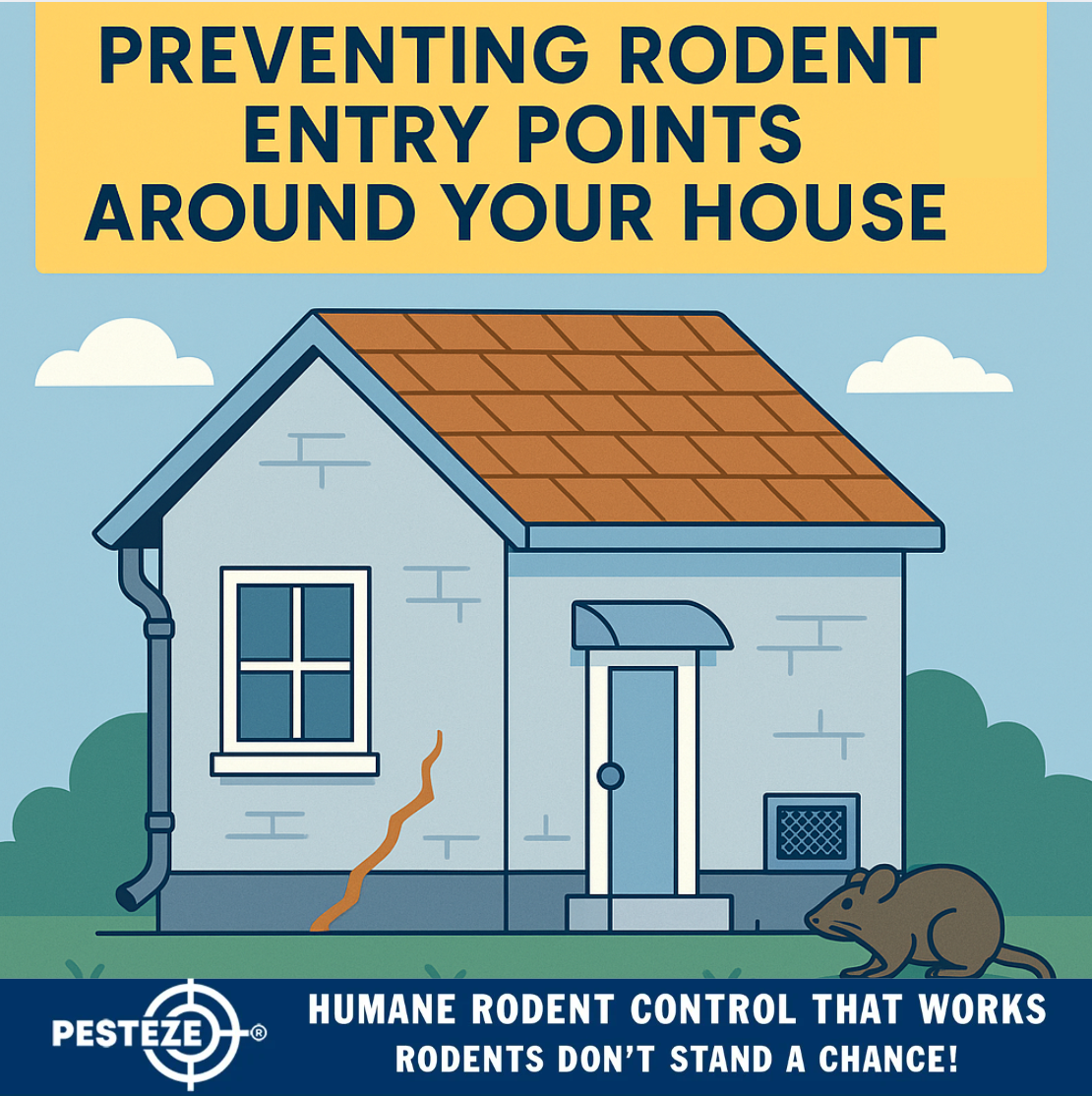PREVENTING RODENT ENTRY POINTS AROUND YOUR HOUSE

PREVENTING RODENT ENTRY POINTS AROUND YOUR HOUSE
SUMMARY
Rodents can squeeze through even the smallest gaps to invade your home. This guide highlights practical strategies to identify and seal entry points around your house, ensuring long-term protection from infestations.
FEATURES
-
Inspect the Exterior: Check walls, foundations, and siding for cracks.
-
Seal Small Gaps: Use caulk, steel wool, or expanding foam.
-
Protect Doors and Windows: Install weatherstripping and door sweeps.
-
Secure Vents and Chimneys: Cover with fine mesh or durable screens.
-
Check Utility Lines: Seal openings around pipes and wiring.
-
Maintain Roof and Attic: Close gaps in soffits, shingles, and eaves.
DESCRIPTION
Rodents are remarkably skilled at finding their way indoors, often through gaps so small that they go unnoticed by homeowners. Preventing rodent entry points around your house is one of the most effective long-term strategies to stop infestations before they begin. With careful inspection and simple repairs, you can build strong defenses against these persistent pests.
The first step is to thoroughly inspect the exterior of your home. Walk around your property and examine the foundation, siding, and walls for cracks or gaps. Even small holes can be used by rodents, so be thorough and use a flashlight to check hidden corners.
Sealing small gaps is crucial. Materials like caulk, steel wool, and eco-friendly expanding foam are excellent for closing off holes and cracks. Steel wool is especially effective since rodents cannot chew through it, and when combined with caulk, it creates a durable seal.
Doors and windows are also vulnerable areas. Installing weatherstripping around frames and door sweeps at the base ensures rodents cannot slip through the smallest spaces. Don’t forget to repair or replace torn window screens.
Vents and chimneys often serve as easy entry points. Cover these with fine mesh screens or durable hardware cloth to allow airflow while blocking rodents. Chimney caps are also highly recommended to prevent entry from above.
Utility lines are another overlooked problem area. Gaps around plumbing pipes, electrical wiring, and HVAC lines provide direct access to your home. Seal these with metal flashing or concrete patches to eliminate weaknesses.
Finally, don’t ignore the roof and attic. Rodents can climb trees, walls, and gutters to access higher areas. Inspect soffits, eaves, and shingles, repairing any loose or broken sections to prevent rodents from squeezing in.
By taking a proactive approach to sealing gaps and reinforcing vulnerable areas, you can greatly reduce the risk of rodent infestations. Preventing entry points not only protects your home but also saves money and stress in the long run.
- Saharsh Bansal


Comments 0